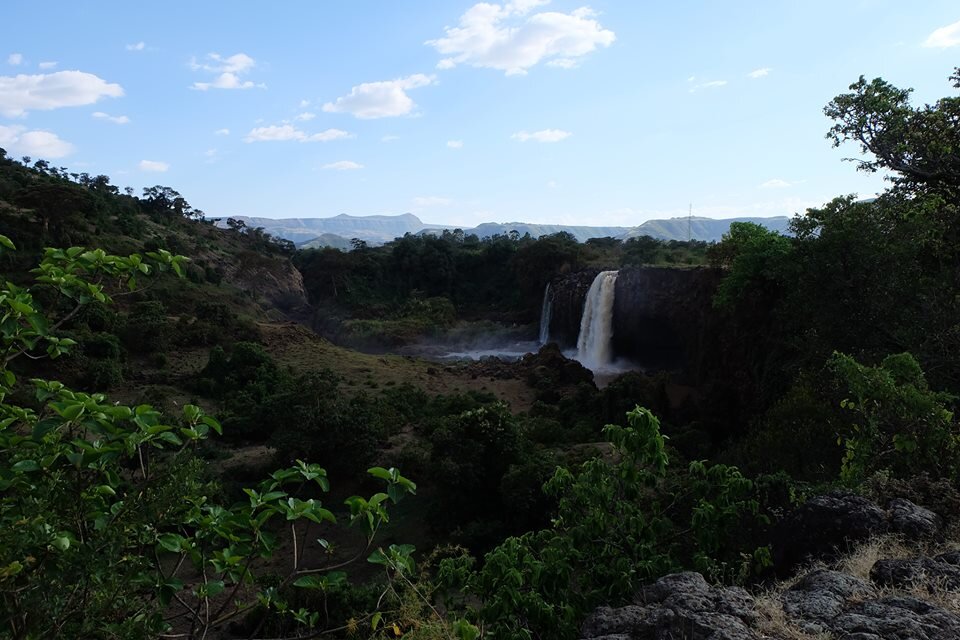Into Africa: 15 Days in Ethiopia

As I write this it is nearing the end of my 11th day in Ethiopia and, exhausted from my travels and associated exertions, I am fighting the urge to lay down and rest before completing a synopsis of what I have thus far accomplished. Ultimately, my hope is to take the things I have learned here and incorporate them into a number of projects, including a fantasy sourcebook for my Skirmisher Publishing LLC, an article on "Men and Monsters of Ethiopia" for Gygax magazine, a series of entries for my personal TravelBlogue, and a handful of other things.
Ethiopia is, suffice it to say, one of the oldest, strangest, and most fascinating places in the world, with roots in Classical mythology and history and it own parallel development of Christianity that predates most of the tradition familiar to us in the West.
After flying into the capital city of Addis Ababa, I ventured up to the northern part of the country, going first to the ancient city of Axum. There, I visited the catacombs of the oldest royal families of Ethiopia, including the tomb of Balthazar, a king of Ethiopia and one of the three magi who visited the baby Jesus; the ruins of the Queen of Sheba's palace; and the Temple of the Ark of the Covenant.
Above left, editor-in-chief Michael O. Varhola exploring an ancient tomb on the outskirts of Axum; above right, a representation of an extracanonical story about a cannibal who ate 78 people that appears in an Ethiopian Orthodox church on the Zege Peninsula in Lake Tana.
I then went on to the mountain town of Lalibela, one of the most sacred places in Ethiopia. There I visited a dozen churches, each carved from a single gargantuan block of stone — and, even more incredibly, all being excavated from the same mass of bedrock and thus essentially being part of just one immense stone! (According to legend angels did about three quarters of the construction at night after the mortal workers had left, but if I were translating this into common game terms I would be much more inclined to think Earth Elementals were employed ...)
After that I moved on to the city of Gonder, where I explored the castles, baths, and fortified churches of the royal family that ruled the country from there for a number of centuries.
From there I traveled overland about 100 miles to the city of Bahir Dar and the shores of Lake Tana, headwaters of the Blue Nile. While sailing the lake in a small craft we had to keep lookout for the hippos that inhabit the waters and menace people traveling across them and, at one point, we spotted two, giving them a wide berth. While there I visited a church hidden in a forest of coffee, lemon, and banana trees and learned about sacred scriptures of the Ethiopian Orthodox church that do not appear in traditional versions of the Bible. I also ventured out to Blue Nile Falls (shown at the top of this page).
Back in Addis Ababa I visited the Ethiopian National Museum, where I learned about the primeval creatures that inhabited the country in ages past and viewed the remains of Lucy, the tiny pre-human hominid who is believed to be an ancestor of our own species.
Yesterday morning, I continued my research at another of the museums here in Addis Ababa. Then, after wandering around the heart of the sprawling capital, I found myself in a tiny hut chewing khat and drinking small cups of black coffee with a man from Harar, a walled medieval city in the eastern half of the country, and hearing from him strange tales of his home. These included ones about small doors being installed in the walls of the city to allow wild hyenas to enter, because they could see malignant jinn that humans could not and help keep them at bay; men who can transform themselves in hyena-human hybrids and who have to live in the wild areas outside the city to avoid being killed; and a strange race of beautiful but cursed, fair-skinned women who practice witchcraft and whose husbands always die within a few months.
Now it is time to sleep a bit, before the priests in the surrounding churches begin loudly praying in the hours between midnight and sunrise, and to regain my strength a bit for my last four days in Ethiopia and whatever I might learn and encounter during them.




